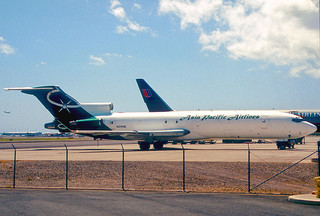Forecast Accuracy Issues? 7 Tips to Improve Projections

Supply chain experts and business analysts use many different models to forecast supply and demand. When it comes to forecast accuracy, no single technique gets it right every time, but the tips below can help you improve your projections.
#1: Take Advantage of Available Intel
The supply chain affects several points of business operation and involves a variety of professionals. The most accurate forecasts are often a collaborative effort between local managers, industry analysts, suppliers, and other experts who influence inventory and demand trends. A unified framework for projections that includes all relevant data is usually the most successful.
This article is for Premium Members only. Please login below to read the rest of this article.
Not a Premium Member yet? Become one today.
[login_form redirect=’https://www.procurementbulletin.com/forecast-accuracy-issues-7-tips-to-improve-projections/’]
[show_to accesslevel=’Premium Members’]
#2: Inventory Levels Should Reflect Demand Forecasts
Consumer demand for a product is the most important piece of data in the supply chain. Companies that accurately predict future demand have more control over inventory levels and can plan appropriately with manufacturers and suppliers to meet those demands. Cross-platform forecasting and collaboration will help businesses overcome obstacles that may hinder performance.
#3: Be Realistic with All Predictions
An optimistic forecast can occasionally benefit the bottom line, but in most cases, predictions that are too unrealistic lead to losses. Again, communication and sharing at multiple levels is the key to creating realistic models. When only limited information is available, use statistical data and earlier trends to make a conservative prediction.
#4: Choose Tools Wisely
Some supply chain experts depend on forecasting software and similar tools to create accurate forecasts, while many professionals argue that these systems are only good for problem solving. Programs that allow real-time monitoring of sales and inventory levels are a big help to many companies, but tools and technology alone can’t improve forecasting accuracy.
#5: Consider the Past, Present, and Future
Effective supply chain strategies take a holistic approach to management and forecasting. Past trends and historical data are a significant suggestion of the future, but current trends and consumer habits are equally important. Economic forecasts, industry outlooks, and other long-term predictions should also be considered to improve the overall accuracy of your forecasts.
#6: Forecasting Is More than Problem Solving
Many popular models used to forecast demand focus on solving common problems in the supply chain, such as inventory shortages or warehousing concerns. Making smart decisions during unforeseen circumstances is more important when it comes to projections. Professionals who learn to weigh their options and analyze the consequences associated with each typically make more accurate forecasts.
#7: Use New Data to Improve Forecasts
Supply chains are becoming increasingly dynamic, making accurate projections even more of a challenge. Companies that consistently monitor their success and immediately work to integrate changes can drastically improve the accuracy of their predictions and are in a better place to meet the needs of their consumers. Flexibility and quick response time are tremendous assets to the supply chain.
Predicting the future will always be a challenge, but supply chain professionals who make communication, collaboration, and flexibility their priorities can feel confident that their projections are reliable.[/show_to]






